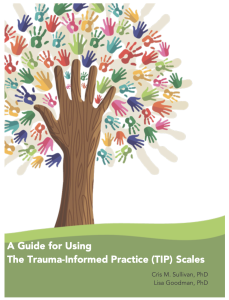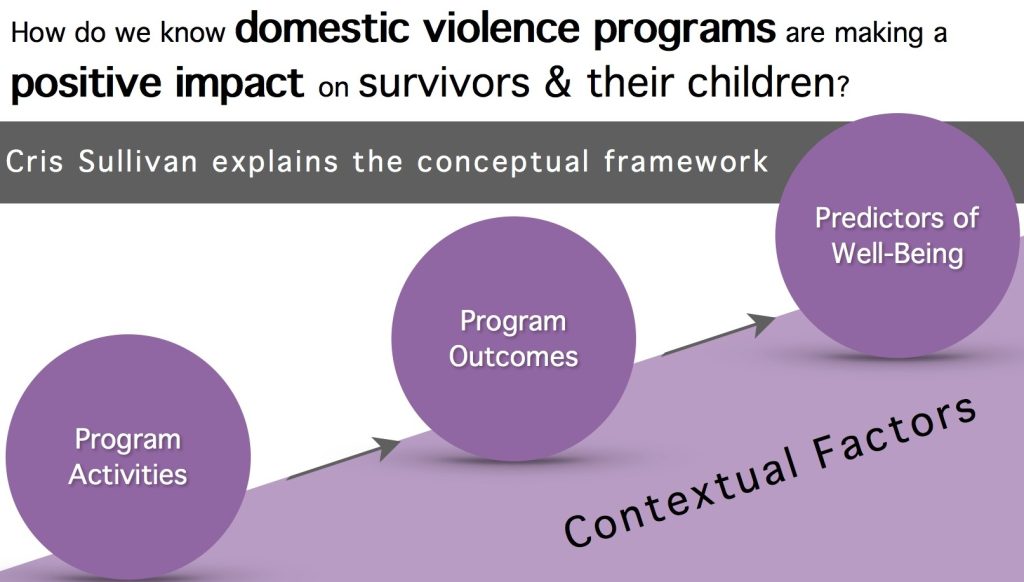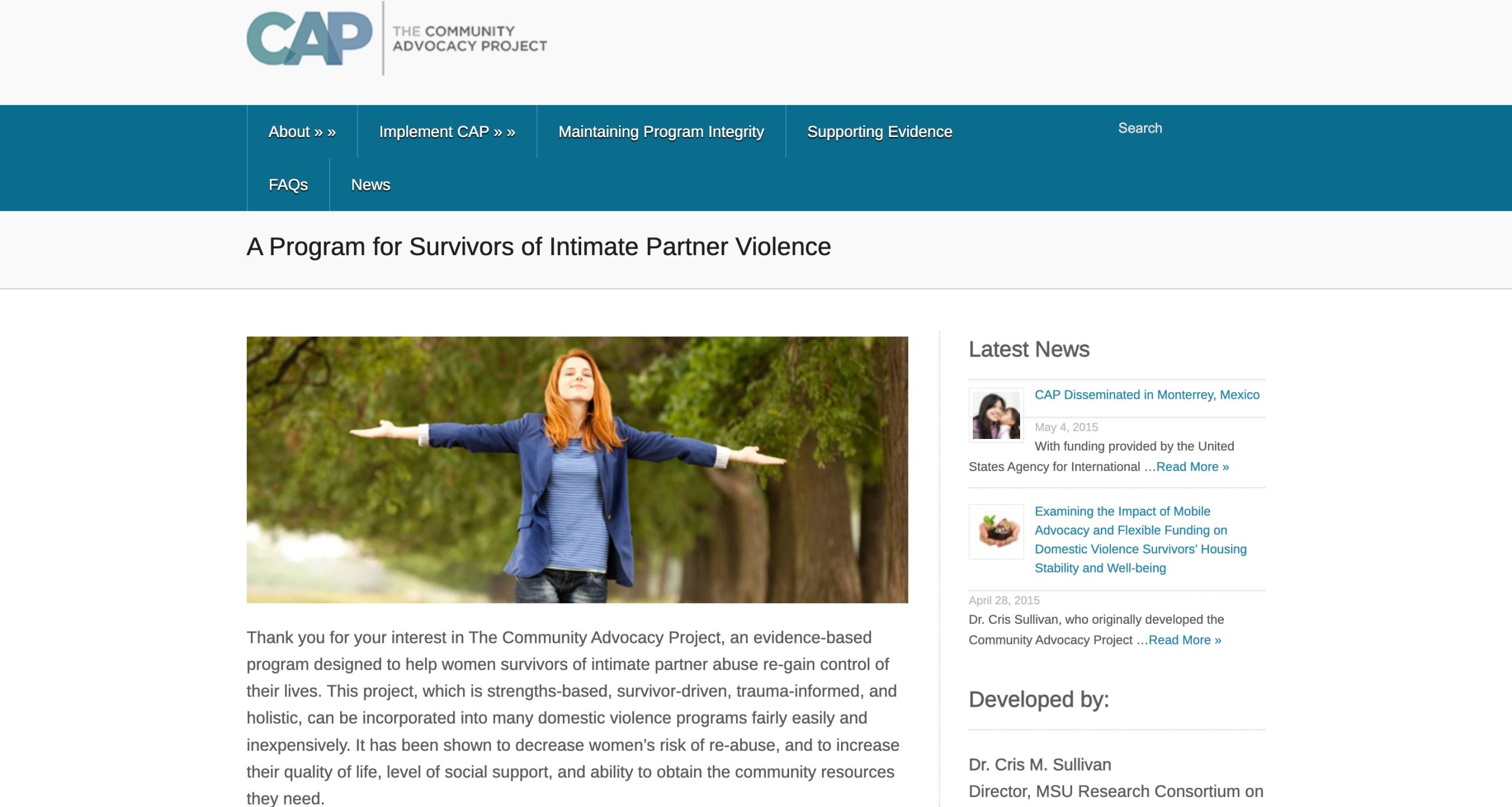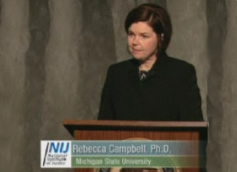Products & Tools

A Guide for Using The Trauma-Informed Practice (TIP) Scales
Authors: Cris M. Sullivan, Lisa Goodman
Description: This brief guide was created to assist nonprofit domestic violence programs and similar organizations interested in using the Trauma Informed Practices (TIP) Scales to examine and improve upon their work. The development of the TIP was a highly collaborative process involving academics, national experts, advocates, and survivors.
Members of the Research Consortium on Gender-Based Violence are committed to working collaboratively with community experts to develop practical products and tools that can be useful to advocates and practitioners. A sample of these products is below, and all are available at no charge. We ask that you properly cite authorship if you use any of these tools, and we hope you find them to be useful.

Program Evaluation for Domestic Violence Agencies
Unlike some service programs with obvious and tangible outcomes — such as those designed to prevent teenage pregnancy or to teach parenting skills — domestic violence victim service programs provide multiple services with intangible or hard-to-measure outcomes. In some cases, services are extremely short-term (such as providing information over the phone) and/or are provided to anonymous individuals (as is often the case with crisis calls). It is also difficult to evaluate programs designed to prevent a negative event from occurring. In the case of battering, the survivor is not responsible for preventing the abuse and is often unable to stop it from occurring regardless of her actions.

Cris Sullivan has worked with domestic violence programs since 1997 to help them evaluate their efforts in ways that are both meaningful to programs and important to funders. Outcome evaluation manuals include:
- Sullivan, C.M. (1998). Outcome evaluation strategies for domestic violence programs: A practical guide. Harrisburg, PA: Pennsylvania Coalition Against Domestic Violence.
- Sullivan, C.M., & Coats, S. (2000). Outcome evaluation strategies for sexual assault service programs: A practical guide. Okemos, MI: Michigan Coalition Against Domestic and Sexual Violence.
- Lyon, E., & Sullivan, C.M. (2007). Outcome evaluation strategies for domestic violence service programs receiving FVPSA funding: A practical guide. Harrisburg, PA: National Resource Center on Domestic Violence.
She has also worked with the National Resource Center on Domestic Violence to compile and publicize the evidence supporting domestic violence programs. Evidence summaries can be found here; further information is at www.dvevidenceproject.org
- Warshaw, C., Rivera, E. A., & Sullivan, C. M. (2013). A systematic review of trauma-focused interventions for domestic violence survivors.
- Sullivan, C.M. (2012). Examining the work of domestic violence programs within a “social and emotional well-being promotion” conceptual framework.
- Sullivan, C. M. (2012). Advocacy services for women with abusive partners: A review of the empirical evidence. Harrisburg, PA: National Resource Center on Domestic Violence.
- Sullivan, C. M. (2012). Domestic violence shelter services: A review of the empirical evidence. Domestic Violence Evidence Project.
- Sullivan, C. M. (2012). Support groups for women with abusive partners: A review of the empirical evidence. Harrisburg, PA: National Resource Center on Domestic Violence.
The following publications can be useful in helping funders understand the complexities involved in evaluating domestic violence programs:
- Sullivan, C. M. (2011). Evaluating domestic violence support service programs: Waste of time, necessary evil, or opportunity for growth?. Aggression and Violent Behavior, 16(4), 354-360.
- Sullivan, C. M., Baptista, I., O’halloran, S., Okroj, L., Morton, S., & Stewart, C. S. (2008). Evaluating the effectiveness of women’s refuges: A multi‐country approach to model development. International Journal of Comparative and Applied Criminal Justice, 32(2), 291-308.
- Sullivan, C. M., Gillum, T. L., Stark, E., & Buzawa, E. (2009). Evaluating community-based services. Violence against women in families and relationships, 1, 55-71.
Best Practices Toolkit for Working with Domestic Violence Survivors with Criminal Histories
Sheryl Kubiak, Cris M. Sullivan, Lauren Fries, Nkiru Nnawulezi, Gina Fedock
Download 172-Page Toolkit Here
Description: This practical toolkit provides information and referral sources to assist both criminal legal and domestic violence professionals in overcoming barriers to effectively working with domestic violence survivors charged with crimes. The toolkit was written as a product of the Michigan Open Doors project, a 3-year planning and capacity-building grant awarded to the Michigan Coalition to End Domestic and Sexual Violence (MCEDSV) by the US Department of Health and Human Services.
Step-by-Step Practitioner Toolkit for Evaluating the Work of Sexual Assault Nurse Examiner (SANE) Programs in the Criminal Justice System
View Project Here
Created As Part of NIJ Award 2005-WG-BX-0003 Rebecca Campbell, Ph.D., Principal Investigator
Description: The goal of this Toolkit is to assist SANE program staff in evaluating how their program affects the reporting, investigation, and prosecution of sexual assault cases in their community.
Resources for communities on untested rape kits:
NIJ Creating a Sexual Assault Kit Testing Plan Report
NIJ Performing an Audit of Sexual Assault Kits Report
NIJ SAK Victim Notification Report
Tools Needed to Implement the Community Advocacy Project

Description: The Community Advocacy Project is an evidence-based program designed by Cris Sullivan to help survivors of intimate partner abuse re-gain control of their lives. This project, which is strengths-based and survivor-centered, can be incorporated into many domestic violence programs fairly easily and inexpensively. It has been shown to decrease survivors’ risk of re-abuse, and to increase their quality of life, level of social support, and ability to obtain the community resources they need.
The Neurobiology of Sexual Assault: Implications for First Responders in Law Enforcement, Prosecution, and Victim Advocacy [Webinar]
Presenter: Rebecca Campbell

This practical and accessible 1.5 hour webinar takes what we know from psychology and neurobiology about how trauma impacts behavior, offering these factors so that the criminal justice system may better understand why victims may behave in ways that appear counterintuitive. The webinar has been heralded by victim advocates, law enforcement and survivors as groundbreaking and illuminating.
Interview with Dr. Rebecca Campbell on the Neurobiology of Sexual Assault
A 3-part conversation with the National Institute of Justice: How can law enforcement tell the difference between trauma vs. Lying? Dr. Campbell brings together research on the neurobiology of trauma and the criminal justice response to sexual assault.

